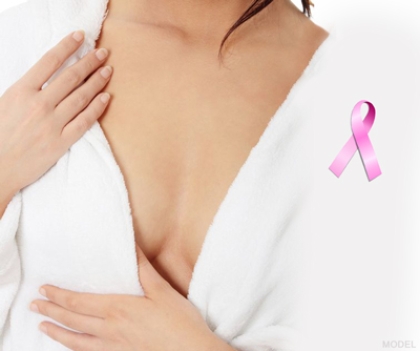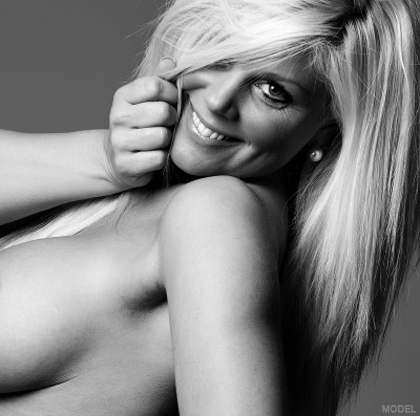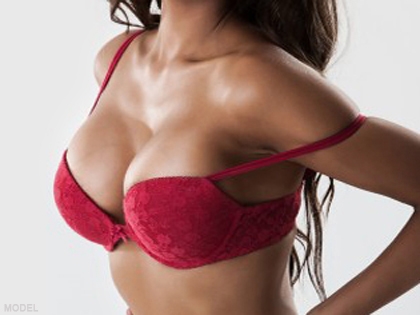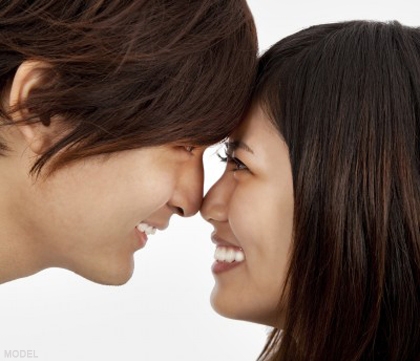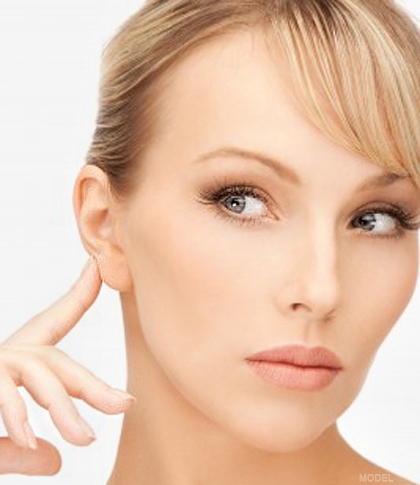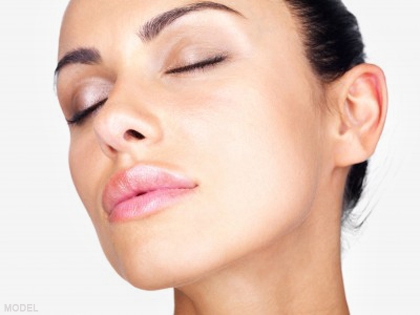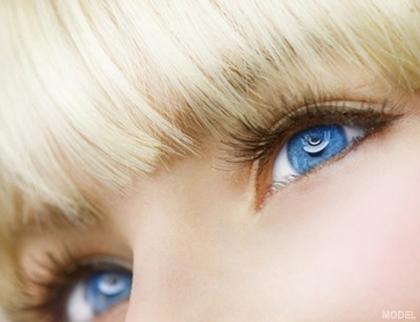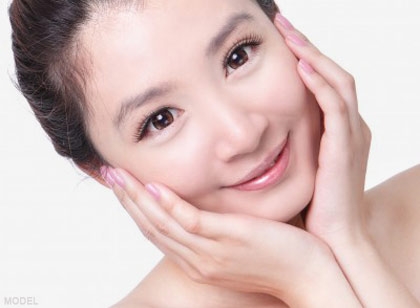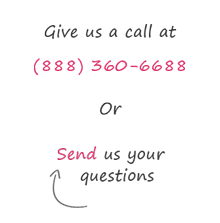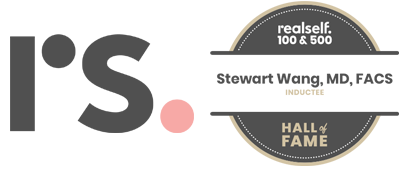It is easy for a surgeon to become comfortable performing breast augmentation in Riverside or Upland, CA using the very same technique every time. However, each patient has their own unique body proportions as well as their own idea of an ideal breast contour. For these reasons, Dr. Wang has developed an expertise in a variety of augmentation techniques.
Choosing Your Incision-Placement Method
Dr. Wang is very comfortable using any of the most effective incision-placement methods — transaxillary (an incision made under the arm pit), periareolar (an incision made along the areola border), inframammary (under the breast crease) or transumbilical (around the inner belly-button).
With the transaxillary approach, an incision is made in the crease of the armpit. As with every technique, there are both benefits and drawbacks for the patient when this method is used. While transaxillary avoids leaving a visible scar on the breast, the downside is that any future breast surgeries would require that a second scar be made at that time on the breast itself.
The inframammary approach places the incision on the lower breast, just above the fold. This placement can make for a well-hidden scar on patients who have some fold in their breasts. Inframammary also gives a surgeon the most direct path for implant placement and adjustment. The drawback is that the patient will have a mild scar directly on the breast - though future breast surgeries could make use of this same entry point rather than having to create a second scar in another location.
A periareolar incision is made along the lower border of the areola, that circle of darker pigment surrounding the nipple. Just as with the inframammary method, the periareolar incision leaves a scar directly on the breast, but provides an excellent path for placing and fine-tuning the position of the implant. Also, a periareolar incision creates an ideal angle from which to perform a breast lift, which many women are apt to desire in the future.
A transumbilical incision, sometimes called a TUBA incision, is well-hidden on the upper, inner border of the belly button. Like the transaxillary approach, a transumbilical incision avoids leaving a scar on the breast, but requires that any future breast surgeries be performed using a second incision on the breast itself.
Under or Over the Muscle
Another procedural choice that must be made prior to undergoing a Pasadena breast enhancement is which method should be used to insert the implant — subglandular (which means above the muscle) or subpectoral (which means under the muscle). A subglandular insertion can make the patient recovery time quicker and more pleasant. This placement is also less likely to interfere with the reading of future mammograms. However, the subglandular style comes with a somewhat higher risk for contour rippling, especially in those patients with thin skin or small breasts. When an implant is inserted using the subpectoral approach, the patient may experience a longer and less comfortable recovery period, but is also likely to find that her implant is less obvious and has a more natural appearance.
Choosing the Right Implant
Exactly which implant should be used in your procedure is yet another important decision to be made before undergoing an Inland Empire breast augmentation. Dr. Wang uses implants from two companies with excellent track records, Inamed and Mentor. Combined, these companies offer a selection of over two hundred implant sizes, shapes (round or anatomical), profile positions (low, moderate or high) and textures. Your skin elasticity, breast tissue type and chest wall dimensions will all play roles in determining which implant is the right one for you. Also, some women will prefer silicone breast implants, while others will be best served by saline-filled implants. Until recently, most breast augmentation candidates had no option but saline (salt water) implants. Recently, the FDA re-approved silicone gel implants for general use, allowing Dr. Wang to offer these popular breast implants to women in the Inland Empire and San Gabriel Valley areas. At your consultation, Dr. Wang will discuss which implants are right for you.
Making Decisions about Breast Augmentation
So which incision-placement is best for you? How should your implant be inserted? Which implant should be used? The right surgeon will work with you to determine which strategies can best achieve the results you desire.
Dr. Wang has the experience of performing more breast augmentations than any other procedure. If you would like a consultation with Dr. Wang, we invite you to request a consultation online or call Wang Plastic Surgery at (888) 360-6688.
The following information about Breast Augmentation and Breast Implants is provided for Pasadena, Riverside, and Inland Empire residents courtesy of Dr. Stewart Wang, a board certified plastic surgeon.
Reconstruction of a breast that has been removed due to cancer or other diseases is one of the most rewarding surgical procedures available today. New medical techniques and devices have made it possible for surgeons to create a breast that can come very close in form and appearance to matching a natural breast.
Many breast reconstruction patients in Pasadena, Arcadia, and Upland, California want to learn more about whether insurance will cover their reconstructive procedure. Insurance coverage for breast reconstruction depends on many factors. While most insurance companies never pay for cosmetic procedures, coverage for reconstructive procedures varies greatly based on your insurance plan and the treatment you require. In some cases, an insurance company will pay for a breast reconstruction procedure once the patient has satisfied all required co-pays. In other situations, the patient will be responsible for all costs associated with the surgery.
Because there are no hard and fast rules when it comes to insurance coverage for the reconstructive procedures we offer, please call us at (888) 360-6688 so we can review your case and give you specific details about your insurance coverage for the consultation and the procedure itself. Our goal is to help you maximize your insurance benefits before having to pay for your breast reconstruction procedure out-of-pocket.
The information about Breast Reconstruction is provided for Pasadena and Riverside residents courtesy of Dr. Stewart Wang, a board certified plastic surgeon.
Women with very large, pendulous breasts may experience a variety of medical problems — from back and neck pain and skin irritation, to skeletal deformities and breathing problems. Bra straps may leave indentations in their shoulders and large breasts can make a woman or a teenage girl feel extremely self-conscious. Breast reduction, technically known as reduction mammoplasty, is designed for such women. The procedure removes fat, glandular tissue, and skin from the breasts, making them smaller, lighter and firmer.
Women who have a breast reduction from Pasadena, Glendora, Chino Hills, Alhambra and Upland often say it's the best decision they ever made, and they wonder why the waited so long to have the procedure. You don't have to wait any longer. Start your breast reduction process now by scheduling a consultation with Dr. Wang. There is no obligation to have the surgery, so let us discuss your options with you. Call Wang Plastic Surgery at (888) 360-6688 today to schedule your appointment.
Breast reduction produces the quickest body-image changes of all plastic surgery procedures available. It is best for patients whose breasts are fully developed and who are emotionally prepared for the dramatic changes in their appearance. Candidates are advised to discuss their expectations and achievable results with Dr. Wang prior to the surgery.
What are the benefits of a breast reduction in the Inland Empire?
Breast reduction can be used to relieve the back and neck pain, skin irritation, skeletal deformity and breathing problems often associated with large breasts. It also relieves the discomfort of identations left in the shoulders. After breast reduction, the breasts appear smaller, firmer and shapelier.
Will insurance cover my breast reduction?
It depends. While most insurance companies never pay for cosmetic procedures, in some cases breast reduction can be deemed medically necessary and consequently covered by insurance. Coverage depends on such factors as your symptoms and the type of health insurance plan you have. In some cases, an insurance company will pay for breast reduction once the patient has satisfied all required co-pays. In other situations, the patient will be responsible for all costs associated with the surgery.
Because there are no hard and fast rules when it comes to insurance coverage for breast reduction, please call us at (888) 360-6688 so we can review your case and give you specific details about your insurance coverage for the consultation and the procedure itself. Our goal is to help you maximize your insurance benefits before having to pay for breast reduction out-of-pocket.
How is a breast reduction performed?
There are several techniques for breast reduction. In rare cases — when only fat needs to be removed — the patient will only require liposuction in Riverside or the San Gabriel Valley. Most commonly, the procedure is performed while the patient is under general anesthesia. Typically, Dr. Wang makes an anchor-shaped incision around the areola that is extended downward to follow the curve of the crease underneath the breast. Once the incision is made, Dr. Wang removes excess glandular tissue, fat and skin. Liposuction may also be used to remove excess fat from the armpits.
After excess skin and fat are removed, the nipple and areola are then moved into a new position. Usually, the nipples remain attached to the blood vessels and nerves. When Dr. Wang is satisfied with the position of the nipples and areola, the skin from both sides of the breast is stretched down and around the areola to form the new contour of the breast. The area is then closed with stitches around the areola, downward and along the crease of the breast. In some cases, the vertical scar can be eliminated.
How long does a breast reduction take?
Breast reductions usually require two to four hours of surgery per breast.
What can I expect after a breast reduction?
You may experience pain for the first few days, particularly when moving about or coughing. Swelling and pain may also occur with your first menstruation after the procedure. You are likely to also experience discomfort for a few weeks and may encounter random, shooting pains for a few months. You may also notice numbness in the nipple and areola area that lessens over time. Pink or red, lumpy scars from the incisions will usually last about six months before fading. It may take six months to a year before your breasts settle into their new shape. Read Dr. Wang's advice about recovery from surgery.
What is the recovery period like?
During the recovery period, you will be encouraged to get out of bed for short periods of time. It may be necessary for you to sleep on your back to avoid unnecessary pressure on your breasts. Surgical drains, if any, will be removed a day or two after surgery and surgical dressings may also be changed or removed. You will be asked to wear a surgical bra for a few weeks until swelling and discoloration diminishes. Stitches are generally removed in stages lasting a period of about three weeks. Straining, lifting and bending during this time is not recommended.
How long before I can return to normal activity?
Most patients can return to work in a couple of weeks, depending on the level of physical activity your job requires. Typically, you can resume most of your normal activities, including mild exercise, after several weeks. Sex should be postponed for at least one week, but Dr. Wang may advise that you wait longer. It is recommended that your breasts be handled extremely gently for at least six weeks.
The following information about Breast Reduction is provided for Pasadena and Inland Empire residents courtesy of Dr. Stewart Wang, a board-certified plastic surgeon.
A breast lift can rejuvenate your figure by restoring the lift and shape that is often lost as gravity takes its toll. Through mastopexy (breast lift plastic surgery), Inland Empire surgeon Dr. Wang raises the breasts and repositions the the nipples. The areolas (the darker skin around the nipples) may be reduced in size as well. Breast lifts have helped hundreds of Dr. Wang's patients feel more confident and satisfied with their breast apppearance. Read what patients are saying about the honesty, respect and personal attention they received from Dr. Wang through every step of the surgical process.
If you're ready to discuss your breast enhancement options, now is a great time to schedule a comlimentary breast lift consultation with Dr. Wang at our plastic surgery offices, serving Southern California including Pasadena, Arcadia and the Inland Empire. You can request a consultation online or call Wang Plastic Surgery at (888) 360-6688 today to schedule your appointment.
Breast lifts offer excellent results for women with smaller breasts that lack firmness or volume; that are experiencing considerable sagging; and whose nipples and areolas are angled downward. Although all breasts sizes can be lifted, smaller breasts usually achieve longer-term results. Women who are planning a future pregnancy should postpone the procedure, since pregnancy can significantly alter the size of a woman's breasts and reduce the effectiveness of a previous procedure. The procedure does not typically interfere with a woman's ability to breastfeed.
Breast lifts are best for candidates with no serious medical conditions who have realistic expectations about the results that can be achieved. When you visit with Riverside, California plastic surgeons, be sure to ask about how they perform the procedure and why they are recommending a particular technique for you.
To help manage and minimize discomfort after surgery, Dr. Wang offers his patients the On-Q PainBuster® Post-Op Pain Relief System. This system consists of a small balloon that pumps anesthetic directly to the surgical site through a tiny tube. Benefits of the On-Q system include:
- Automatic and continuous pain management for up to 5 days
- Reduced potential for breakthrough pain and need for narcotics
- Compact size for discreet and comfortable use
- Simple removal once all medication has been delivered
With the ON-Q system, you can get back on your feet quickly and enjoy all life has to offer.
If you feel that your nose is not a good fit, you may benefit from cosmetic surgery of the nose, also called Rhinoplasty. Rhinoplasty can enhance the shape, size and general appearance of your nose. Rhinoplasty can also be used to correct birth defects, injury and breathing problems.
If you're ready to discuss you or your child's nose surgery options, now is a great time to schedule a Rhinoplasty consultation with Dr. Wang at our plastic surgery offices, serving Southern California including Pasadena, Arcadia and Upland. You can request a consultation online or call Wang Plastic Surgery at (888) 360-6688 today to schedule your appointment.
Age is a consideration with Rhinoplasty, as it is preferable for surgeons to operate after the growth-spurt of teenagers has been completed. This usually occurs around 14 or 15 for girls and later for boys. The social environment and required emotional adjustments should also be considered when considering nose surgery for teenagers.
Dr. Wang is a facial cosmetic surgery specialist and understands the many issues and concerns for people looking to make a lasting change to their facial appearance. Read what patients are saying about the honesty, respect and personal attention they received from Dr. Wang through every step of the surgical process to see why so many people in Southern California trust him to create beautiful and satisfying results.
What are the common benefits of nose surgery?
Rhinoplasty can be used to correct birth defects, nose injuries and breathing problems, as well as enhancing the general appearance of the nose.
How is Pasadena rhinoplasty performed?
Nose surgery can be performed under either local or general anesthesia, depending on the extent of the procedure. During the procedure, Dr. Wang makes an incision either from inside the nostrils or across the tissue separating the nostrils. Dr. Wang then separates the skin of the nose from its supporting framework of bone and cartilage to sculpt the desired shape of the nose. When shaping is complete, Dr. Wang reforms the skin over the new framework and adds a splint to help the nose maintain its new shape. Dr. Wang may also insert nasal packs or soft plastic splints into your nostrils to stabilize the dividing wall between the air passages.
How long does nose surgery take?
Rhinoplasty in the Inland Empire and Pasadena can take one to two hours, depending on the complication of the procedure.
What can I expect after nose surgery?
During the first 24 hours after nose surgery your face will feel puffy, your nose may ache and bleed, and you may also have a dull headache. It is best that you remain in bed, in an elevated position, for the first day. There will be swelling and bruising around your eyes that will worsen before beginning to subside after about two weeks. Nasal packing is usually removed after a few days, while dressing, splints and stitches are removed in a week to two weeks. Read Dr. Wang's advice about recovery from surgery.
What is the recovery period like?
During the recovery period you should avoid strenuous activities that might raise your blood pressure, such as jogging, swimming and sex for two to three weeks. You should also be gentle when washing your face and hair or applying cosmetics. Avoid hitting, rubbing or getting your nose sunburned for eight weeks. You can wear contact lenses, but glasses will need to be adjusted so as not to interfere with proper healing of your nose. Read Dr. Wang's advice about recovery from surgery.
How long before I can return to normal activity?
Most patients who have received nose surgery can return to sedentary work in about a week or so. However, it may be several weeks before you can return to more physical activities.
The information about Nose Surgery (Rhinoplasty) is provided for Pasadena and Inland Empire residents courtesy of Dr. Stewart Wang, a board certified plastic surgeon.
Ear shaping, ear pinning or otoplasty is a form of ear surgery performed to set disproportionately large or prominent ears closer to the head. Too much cartilage in the concha, the bowl-shaped portion of the ear and lack of development of the natural folds of the ear (antihelix) are the usual causes of large, protruding ears.
You can schedule a consultation with Dr. Wang to discuss yours or child's ear condition privately. Dr. Wang will be able to discuss your options and answer any of your questions. You can request a consultation online or call Wang Plastic Surgery at (888) 360-6688 to schedule your appointment.
Protruding ears cause more image problems than any real medical problems. It is commonly sought for children who often suffer from the unwanted attention protruding ears can cause. Children are excellent candidates because their ear tissue is very flexible. Although the procedure is more common among children, almost anyone can achieve successful results with ear pinning.
What are the common benefits of ear pinning?
Ear pinning improves the proportion of the ears to the size and shape of the head. The procedure does not alter hearing.
How is ear pinning performed?
While the patient is under general anesthesia (young children) or local anesthesia and sedative (adults and older children), Dr. Wang makes an incision in the natural fold where the ear is joined to the head, just behind the ear. If necessary, Dr. Wang will remove excess cartilage and skin. If no removal is required, Dr. Wang will trim the cartilage to shape it to a more proportionate form, then pin the cartilage back with permanent sutures.
How long does ear pinning take?
Ear pinning usually requires two hours of surgery.
What can I expect after ear pinning?
After surgery, most patients experience aching or throbbing of the ears for a few days, as well as a small scar that fades with time. Patients should not expect perfect symmetry of both ears, since this is not likely in even natural ears. However, a more balanced look can be achieved. Read Dr. Wang's advice about recovery from surgery.
What is the recovery period like?
After ear pinning, patients are usually mobile within a few hours of surgery. The head will be wrapped in bulky bandages immediately following surgery, but within a few days these will be replaced with a lighter, headband-like dressing. Stitches are usually removed in about a week. Patients should avoid sleeping on their sides for a week or more so as to avoid putting pressure on the ears, as well as any activity that bends the ears for a month. Read Dr. Wang's advice about recovery from surgery.
How long before I can return to normal activity?
Most children can return to school in about seven days, but they must be careful while playing. Adults can return to work approximately five days after surgery.
The information about Otoplasty is provided for Pasadena and Riverside area residents courtesy of Dr. Stewart Wang, board certified plastic surgeon.
Although many patients choose to focus on the face in enhancing their appearance, it is often necessary to address the neck area, which is crucial for maintaining a healthy, youthful look. Patients seeking to define the contour of the neckline may consider a neck lift, which includes one or more surgical techniques depending on the patient’s individualized needs. Sagging of the neck muscles and loosening of the skin often occur as part of the aging process, but can also be hereditary or can result from significant weight loss. During a neck lift, Dr. Wang may choose to use one technique or a combination, which depends on the individual's anatomy and goals. A neck lift can be performed as a stand-alone surgery, but is often done in conjunction with a facelift to create a truly revitalized appearance.
Now is a great time to schedule your neck lift consultation with Dr. Wang at our plastic surgery offices, serving Southern California including Pasadena, Arcadia and Riverside. You can request a consultation online or call Wang Plastic Surgery at (888) 360-6688 today to schedule your appointment.
What does a neck lift entail?
One component of the surgery is cervicoplasty, which involves cutting, removing, lifting, and suturing of the skin in the neck area. Platysmaplasty involves tightening the underlying neck muscles (platysma) by pulling them together and affixing them with permanent sutures. This is especially effective for eliminating the formation of lines, or bands, as they are often called, in the neck area. These bands usually form due to loosening of the muscles along the neck. Liposuction of excess fat in the area may also be used in combination with the above techniques or by itself. These techniques are performed under local or general anesthesia, which depends on the particular surgical approach and also whether or not the patient is undergoing complimentary procedures at the same time. In some cases a drainage tube may also be inserted to remove excess fluid and is usually removed a few days after surgery.
How are the incisions made?
The incision(s) depend on what type of approach Dr. Wang determines is best to achieve the patient’s goals. In performing cervicoplasty, which involves lifting and tightening of the skin, and/or platysmaplasty, which involves tightening the underlying muscles, Dr. Wang will likely make inconspicuous incisions behind the ears and underneath the chin. Likewise, if liposuction is required, an incision under the chin and possibly along the hairline behind the ear will be necessary. As part of the platysmaplasty procedure, Dr. Wang makes the incisions and then uses a tiny instrument called an endoscope to either remove portions of the neck muscles or realign them. The muscles are then permanently sutured underneath the skin to remain tightly in place.
What does recovery entail?
During the recovery process the patient must wear an elastic bandage around the neck and head to support the neck area. The neck and jaw may be bruised and continue to swell for several days. Tingling and numbness may also occur. For two to three days following surgery patients will likely require pain medication to alleviate mild discomfort. Patients should sleep with their head elevated for one to two weeks after surgery. It is recommended that patients avoid strenuous activity for a few weeks; however, returning to work is usually possible after two weeks or so.
What are possible complications?
As with most surgical procedures, complications are possible with neck lift surgery. One risk is infection, which usually causes fever and/or unusual discharge at the incision site. Depending on how the patient usually scars, the formation of keloids is possible. Tension and tightness in the neck may also occur, but usually lessens within four to six weeks after surgery. Nerve damage, the collection of blood or fluid underneath the skin, skin lumpiness, and deep vein thrombosis (blood clotting) are rare complications.
Kissable full lips together with an elegant jaw line define an alluring facial profile. The chin is a critical element of the aesthetic proportions and symmetry of a face. While plump lips will add fullness and definition to the face. Permanent chin and lip implants can enhance your facial balance and harmony.
Now is a great time to schedule a Lips or Chin Augmentation consultation with Dr. Wang at our plastic surgery offices, serving Southern California including Pasadena, Arcadia and Riverside. You can request a consultation online or call Wang Plastic Surgery at (888) 360-6688 today to schedule your appointment.
Chin enhancement, chin reshaping, or chin augmentation can be surgically achieved by chin implants, often called genioplasty or mentoplasty, which strengthens the appearance of a “weak” or receding chin by increasing its projection. Another possibility for improvement through chin surgery is laser liposuction in which excess fatty tissue is removed to redefine the chin or jawline.
Chin augmentation, or genioplasty, is fast becoming one of the most efficient methods of enhancing one’s look. Changing the contour of the chin can help create a stronger jaw line, balance out facial features, and improve facial symmetry. For those looking to achieve such enhancements, Dr. Wang is highly skilled in performing several chin augmentation procedures. He offers both a non-invasive technique as well as surgical procedures involving either the insertion of a chin implant or the repositioning of the patient’s chin bone. These methods are often performed in combination with other facial procedures. Patients undergoing a nose surgery (rhinoplasty), for example, or a facelift (rhytidectomy) may also opt for genioplasty in achieving a balanced overall aesthetic.
Is there a non-invasive option for Lips and Chin Enhancements?
For patients seeking a non-invasive, in-office procedure, the injection of a soft tissue filler is an excellent option. Dr. Wang uses Radiesse, a semi-permanent injectable filler that stimulates the body’s own collagen production process, to add volume to the chin area. The results are instant and last about a year.
What is chin implantation?
For those seeking a more permanent enhancement, Dr. Wang may perform chin implantation surgery. An implant is placed on top of the chin bone to help enhance a receding chin, make the chin wider, or even lengthen the face somewhat. Implants are available in a variety of sizes, shapes, and materials, depending on the desired goal and the technique utilized.
What is chin repositioning (osteotomy)?
Instead of using a chin implant, Dr. Wang may choose to perform osteotomy, which involves repositioning the patient’s own chin bone. This can be done in order to correct a short chin or to shorten or narrow the chin. An incision is made inside the mouth so that the bone can be cut, repositioned, and then wired into place.
How is the incision made?
The incision choice depends on the type of procedure and the surgeon’s preference. This choice also depends on the type of implant selected and the desired effect. With osteotomy, the incision is made inside the mouth between the lower lip and gum. For implant placement, either an internal or external incision can be used in order to create a pocket for the implant to be placed between the bone and the chin tissue. With both approaches, light anesthesia or general anesthesia can be used, depending on the choice made by Dr. Wang and the patient.
What is the typical recovery time?
Recovery time after undergoing genioplasty depends on the particular approach used and also whether or not other procedures were performed simultaneously. Patients who undergo genioplasty alone generally find it easy to return to light activities shortly after the procedure. A chin sling or wrap is usually used for several days following surgery in order to provide support.
With the oral incision option, patients are restricted to a liquid or soft diet for several days in order for the gums to heal. Sutures dissolve on their own after several weeks. If an external incision is made, sutures are removed in office after several weeks.
Patients who opt for chin implantation often experience “tightness” in the chin area due to the newly added implant and because of the body’s own swelling reaction to surgery. This mild discomfort is generally lessened by the use of oral pain-relieving medications, which are usually needed for a few days after surgery. Bruising generally improves within seven to ten days.
What kind of complications can occur?
Scarring – No visible external scars are present when the incision is made inside the mouth. A very small, easily concealable scar will likely be present if the incision is made externally.
Side Effects – Immediately following surgery, patients experience a sense of their chin being “asleep” due to the effect of the anesthesia. This effect usually wears off shortly after the procedure. Those who undergo osteotomy may experience a temporary loss of feeling of the lip and chin that may take several weeks to months to wear off.
This is why it is important to wear the chin support for the fully recommended period and to avoid contact activities until fully healed. In the event that the chin implant somehow becomes infected, removal may be necessary in order to clear the infection.
Many people have baggy lower eyelids or puffy eye bags due to genetics or signs of aging. The cause of bagginess and puffiness of the lower eyelid is generally due to a combination of herniating fat, excessive skin, and edema (water retention).
Asian Double Eyelid Surgery (Asian Blepharoplasty) is a blepharoplasty procedure used to create a supratarsal epicanthic fold in the upper eyelid of the patient who lacks such a crease. The supratarsal epicanthic fold is common to most ethnic groups, but is absent in approximately 50% of the Asian population.
Placing or replacing a fold in the upper eyelids will give patients bigger, brighter eyes. The procedure is highly sought after by patients who desires to enhance the symmetry of the eyes with natural-looking creases that are suitable for Asian's facial features.
Dr. Wang, with plastic surgery offices in Pasadena and the Inland Empire, is highly experienced in Asian Double Eyelid Surgery. Based on the shape, size and width of your eyes, distance between your brows and eyes, fat density underneath your eyelid, skin elasticity, height of your nose bridge, and your facial structure, Dr. Wang will discuss the double eyelid surgery options with you.
Whether it's the suture or incision, including the full-incision, partial incision and no incision methods (e.g. the DST method), for the crease formation, height of the crease, removal of excess skin or fat, the Asian double eyelid surgery should vary by patient's anatomy and desire. If you think you're ready to discuss your Asian Blepharoplasty options, now is a good time to request a consultation online or call Wang Plastic Surgery at (888) 360-6688 today to schedule your appointment.
How long does Asian double eyelid surgery take?
Eyelid surgery usually takes from one to three hours.
What can I expect after Asian double eyelid surgery?
After the procedure, Dr. Wang is likely to lubricate your eyes with ointment and apply a bandage. Stitches will be removed two days to a week after surgery. You may experience soreness and tightness in your eyelids that can be relieved with medication as prescribed by Dr. Wang. You will be required to keep your head elevated and use cold compresses for several days to reduce swelling and bruising. You are also likely to experience excessive tearing, sensitivity to light and temporary changes in your vision.
What is the recovery period like?
During recovery back home in Pasadena or Riverside, your eyes may feel gummy for a week or so. Dr. Wang will show you how to clean your eyes. Dr. Wang may also recommend eye drops to relieve dryness, burning or itching. You should be able to watch television or read within two or three days. You will want to avoid contact lenses for about two weeks or until they begin to feel more comfortable. It is, however, recommended that you wear sunglasses and a sun block for eyelids to reduce sensitivity to the sun, wind and other irritants. Scars may remain slightly pink for six months or more, but will fade to a nearly invisible white line. Read Dr. Wang's advice about recovery from surgery.
How long before I can return to normal activity?
Dr. Wang may advise you to minimize your activities for three to five days and to avoid more strenuous activities — particularly those that raise your blood pressure — as well as alcohol, for about three weeks.


